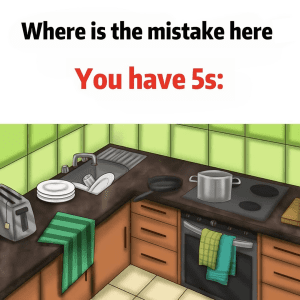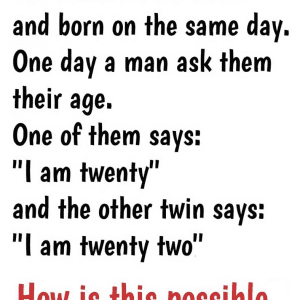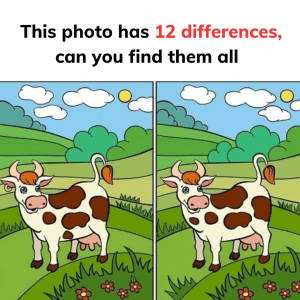In today’s world of social media, puzzles and riddles have taken over our feeds, challenging us to think critically and look closely. One popular puzzle, “spot the poor person,” has captured attention by presenting an image of four individuals, each with subtle clues hinting at their socioeconomic status. So, who among these four might be considered poor? Let’s dive into each character’s visual cues and analyze why Person D stands out as the answer.
Setting the Scene: Observing the Four Individuals

The puzzle begins by introducing four people waiting in line: Persons A, B, C, and D. Each person has unique attire and accessories, which, when closely examined, reveal hints about their financial situations. To solve this puzzle, we need to observe every detail and consider what their appearances and belongings imply. Let’s explore each character individually to see what story they might tell.
Person A: The Stylish Woman in Pink
Person A immediately grabs attention with her flashy pink outfit, accessorized to perfection.
- Appearance: She wears a chic, bright pink dress, accessorized with jewelry and a matching handbag.
- Accessories: With shopping bags in hand and a smartphone, she seems comfortable with luxury items.
- Impression: Her fashionable look and branded accessories suggest that she has disposable income to spend on non-essentials, hinting at financial security.
From her attire and accessories, Person A appears financially comfortable. Her stylish appearance and presence of luxury items suggest she’s not living on a tight budget, making it unlikely that she represents a lower socioeconomic status.
Person B: The Elderly Gentleman in a Suit
Next in line is Person B, an older gentleman dressed formally and neatly, giving off an aura of stability and respectability.
- Appearance: Dressed in a well-fitted suit with a tie, his gray hair is neatly groomed, and his posture is confident.
- Impression: The suit suggests that Person B is used to professional settings or has a background in a career requiring formal attire.
- Lifestyle Implication: Wearing a suit implies familiarity with stability, possibly indicating he has retired from or is engaged in a career that allows for financial security.
Person B’s polished look and neat grooming make it unlikely that he’s financially struggling. His attire suggests he’s enjoyed a stable, perhaps even prosperous, career and lifestyle.
Person C: The Professional Woman in Business Attire
Person C stands out with her business attire, showcasing a professional, polished appearance.
- Appearance: She wears a formal business suit and carries a sleek handbag, enhancing her professional image.
- Body Language: Her confident posture hints that she’s accustomed to professional settings, likely a career that demands formal dress.
- Impression: The outfit and overall demeanor suggest that Person C has a steady job in a professional environment, pointing to financial security.
Based on her attire and accessories, it’s safe to assume that Person C isn’t financially struggling. Her polished, businesslike appearance implies a stable income, making it unlikely she’s the person in need.
Person D: The Casual Young Man with Gadgets
Person D, dressed in casual clothing, brings a different vibe compared to the other individuals.
- Appearance: He wears a simple hoodie and jeans, a laid-back style that contrasts with the formality of the others.
- Accessories: Equipped with headphones, a tablet, and a backpack, he gives off a student-like impression.
- Impression: While he possesses gadgets, his casual look and functional accessories suggest he might be working within a budget, potentially a student managing with basic necessities rather than luxury.
Compared to the other characters, Person D’s simple and practical attire hints at a more modest lifestyle. The lack of luxury accessories and his functional belongings make him the most likely candidate to be financially constrained.
Decoding the Answer: Why Person D is the Most Likely to Be Poor

After analyzing each individual, several factors point to Person D as the most likely answer to “Who is poor?” Here’s a breakdown:
- Simplicity of Attire
Persons A, B, and C are dressed in polished, professional, or stylish attire, while Person D’s hoodie and jeans lack the sophistication or flair of the others. This casual look suggests he may live on a limited budget, possibly prioritizing comfort and functionality over luxury. - Student-Like Appearance
The backpack and tablet give Person D a student-like vibe, and students are often associated with tight budgets and financial dependency. This detail hints that he may not have access to the same disposable income as the other characters. - Functional Over Luxury
Unlike the others who display accessories indicative of wealth or stability, Person D’s tablet and headphones appear functional rather than luxurious. This practical approach to belongings aligns with someone managing on limited financial resources. - Absence of Wealth Indicators
Person A’s shopping bags and jewelry, Person B’s formal suit, and Person C’s business attire all signal a higher level of financial security. Person D, however, lacks these indicators of wealth, supporting the idea that he may be living a more modest lifestyle.
Spotting Subtle Details: Why We Often Miss the Smallest Clues
Challenges like this one urge us to look beyond the obvious. It’s easy to focus on striking elements, like Person A’s flashy outfit or Person B’s suit, but sometimes the most revealing clues are the least attention-grabbing. People often associate technology, like tablets or headphones, with wealth, but that’s not always the case. Careful observation shows that Person D’s modest belongings and practical attire actually reveal more about his lifestyle than initially meets the eye.
This puzzle highlights how appearances can be misleading, teaching us to question stereotypes and examine details carefully. By analyzing each character’s choices in clothing and accessories, we see that Person D’s casual, practical appearance points to a lifestyle with more financial limitations than the others.
Conclusion: Why Person D Stands Out as the Answer
After thoroughly examining each character’s appearance, accessories, and lifestyle implications, it’s evident that Person D is most likely the “poor” individual in this scenario. His casual attire, student-like appearance, and absence of luxury items hint at a life with limited financial resources, especially when compared to the others who demonstrate signs of wealth and stability.
This puzzle is a fun reminder that the answers we seek often lie in the smallest details. It encourages us to think critically and look past surface-level assumptions, whether in riddles or real-life situations. So, did you guess correctly? Keep challenging yourself with puzzles like these to sharpen your observation skills and think beyond the obvious. And remember, sometimes it’s the understated clues that reveal the most.


